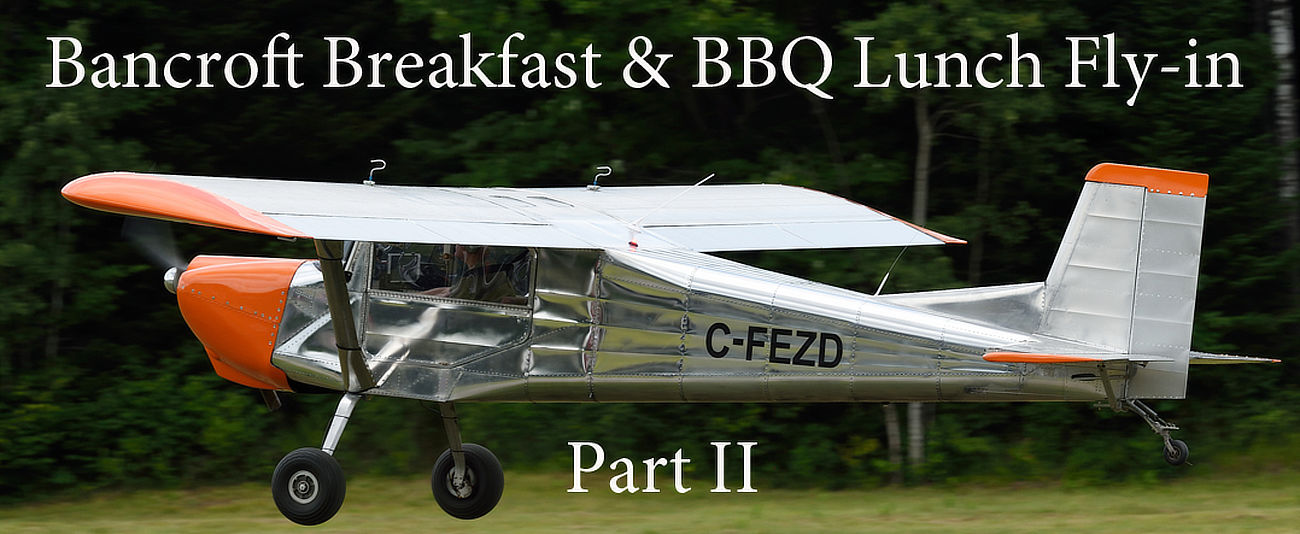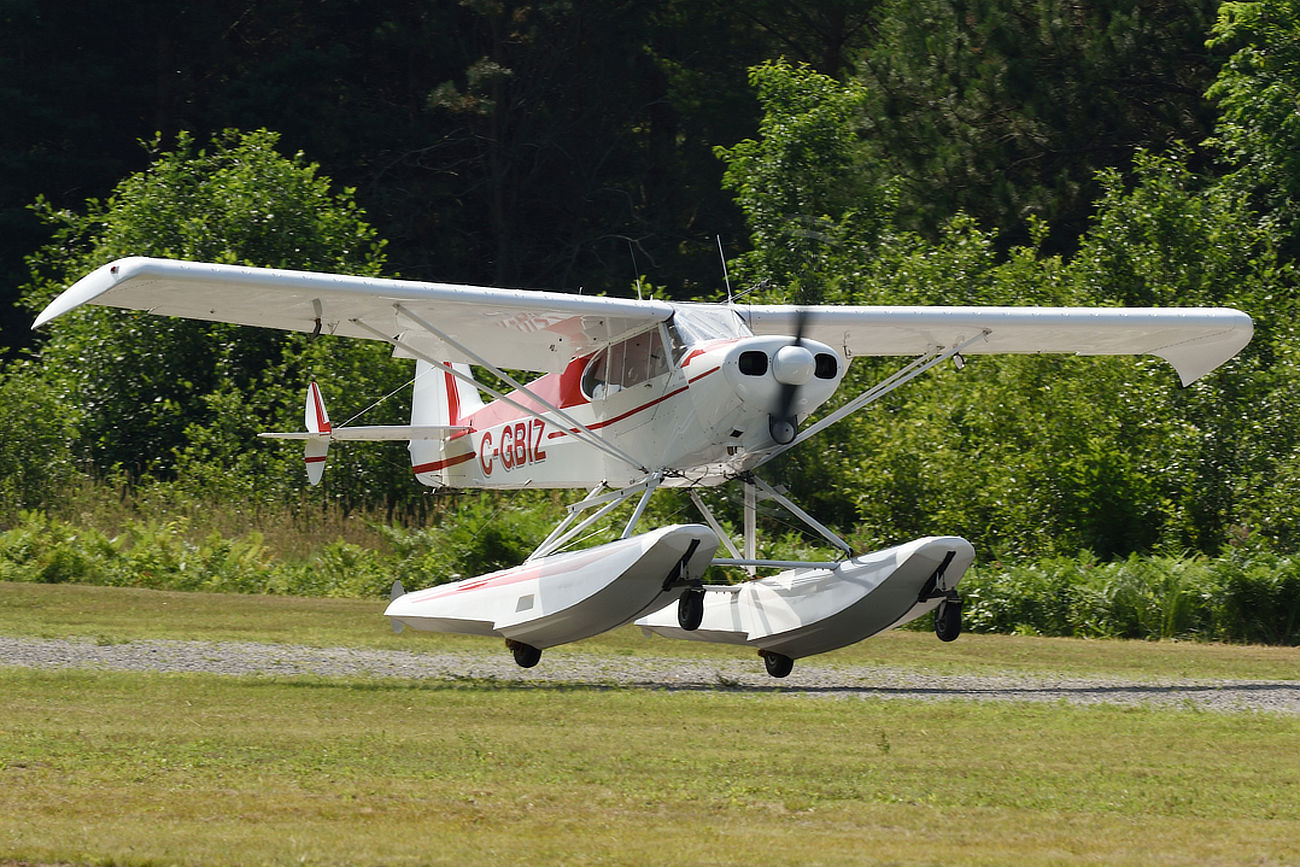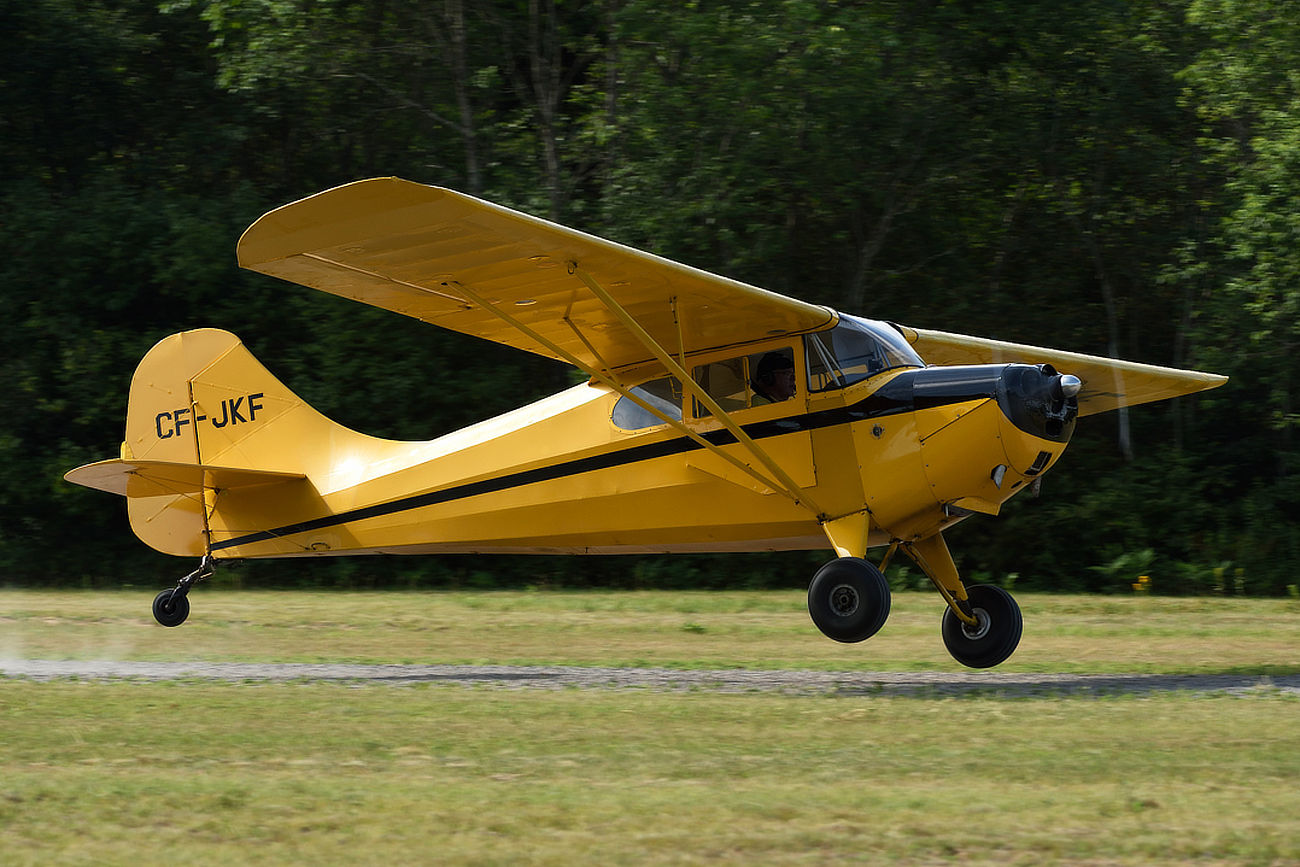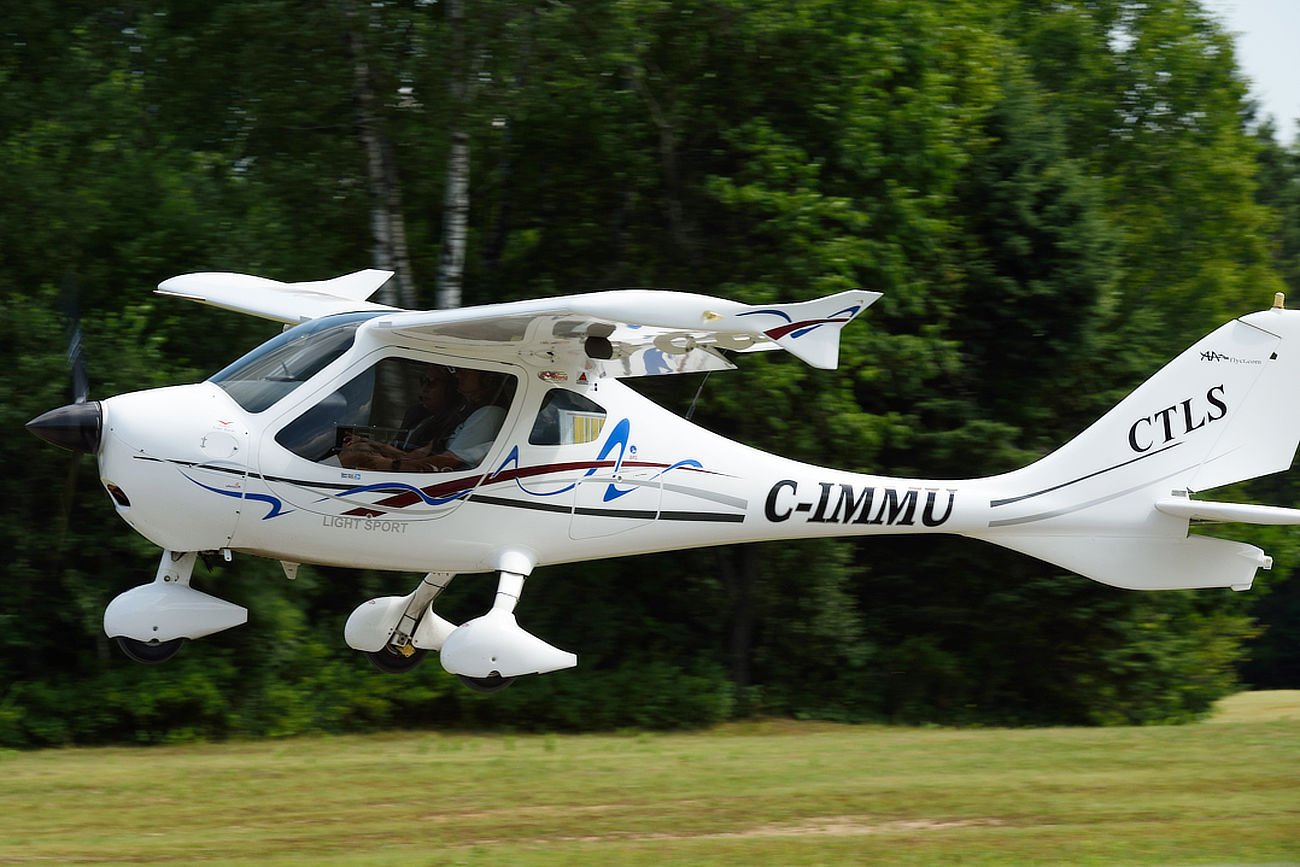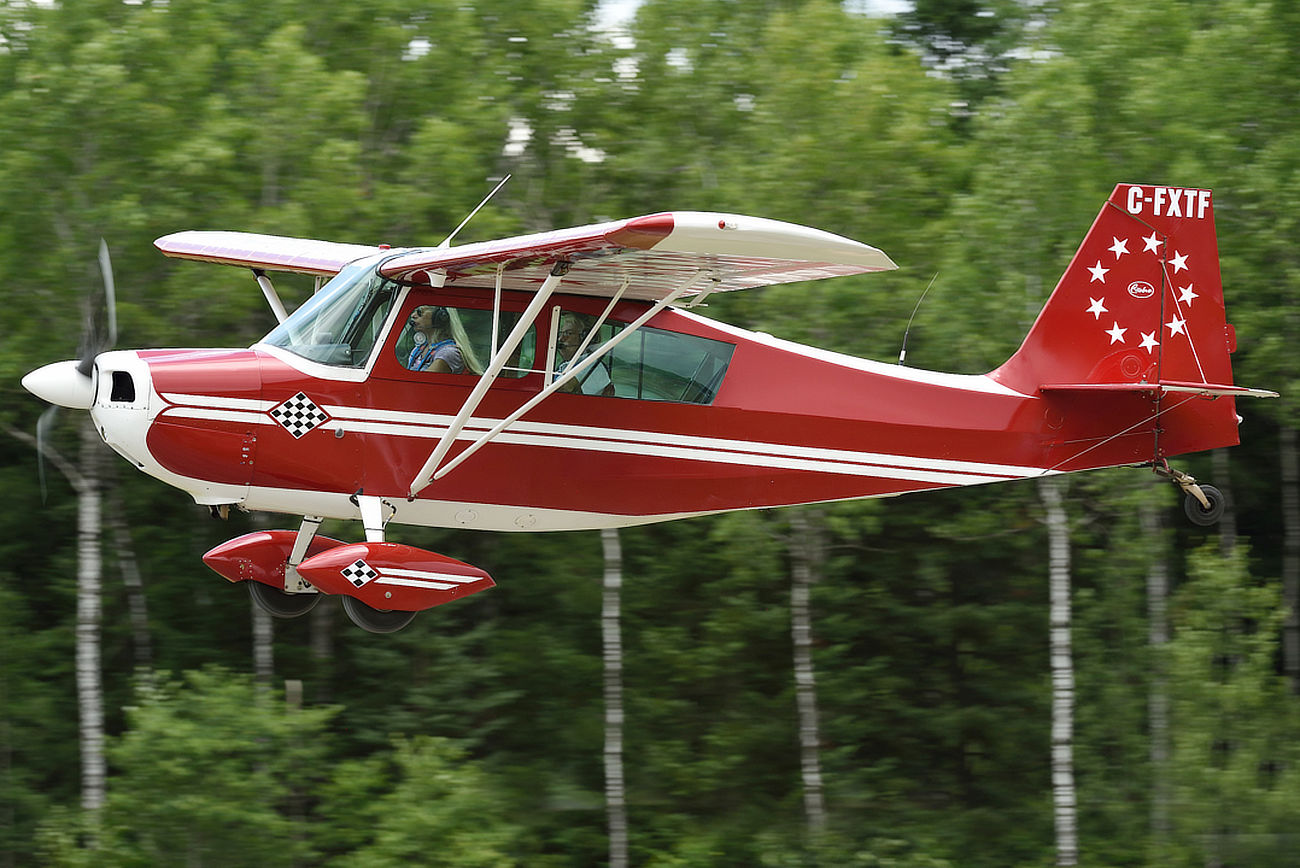ISSUE 956 - August 12, 2025 • Over 7,000 Total Ads Listed • 1,000+ NEW Ads Per Week
This eFlyer Has Been Sent To Over 160,000 Subscribers
|
| Bancroft Flying Club Breakfast & BBQ Lunch Fly-in - Part 2 |
| Kevin Moore, Contributing Writer & Photographer |
|
Last week we visited the Bancroft Airport and the Bancroft Flying Club Breakfast & BBQ Lunch Fly-in. We return to the fly-in this week to look at more of the visiting aircraft and some more airport and local information.
|
|
|
| In part I of the article we saw an assortment of visiting and resident aircraft, a few classic cars, lots of visitors and learned a little about the Bancroft area. We return to the Bancroft Airport for more this week. |
|
|
|
| Another popular aircraft type comes from Champion and Bellanca in the Champ, Chief, Citabria and Super Decathlon line of aircraft. |
|
Aeronca Aircraft Company began producing aircraft in the 1940s and the Champion, or Champ as it's mostly referred to as, was a very popular 2-seat, tandem aircraft. It was produced to compete with the Piper J-3 Cub and, though not as popular, it was much loved by its owners/pilots. They are still a popular and relatively well sought after aeroplane today. They are fun to fly and, despite not being particularly fast, you can still go places or just enjoy your after work, evening hop around the patch. Champion and Bellanca Aircraft built the popular Citabria and then the higher performance, aerobatic Super Decathlon (Super D). Like the Champ, they are 2-seat, tandem aircraft, single engine but with a little better performance than the Champ.
|
|
|
|
| Two more resident aircraft, both Cessnas 172 Skylanes. |
|
For pilots interested in flying to Bancroft for the fly-in, it's not as long a flight as you might think. Distance in miles makes it less than an hour from many different areas including North Bay (100 miles), Ottawa (100 miles), Trenton (60 miles) and Peterborough (55 miles) along with many more airports of central and eastern Ontario. Even places like Edenvale, Markham, Toronto, Cornwall and Alexandria, you're typically within an hour or so of Bancroft so plan a flight to the 2026 fly-in.
|
|
|
|
| The Corben Baby Ace is a relatively small aircraft, light, not very fast but great for building time, hopping around the patch or, like this one, attending a fly-in. |
|
The Corben line of aircraft began with designer Orland G. Corben and his first design in 1923. Five years later he developed the first kit aeroplane with the Baby Ace and, following that 2 years later, the Junior Ace. For over 100 years, the Baby Ace and Junior Ace have been available as homebuilt kit aircraft with 5 different variants available to build. They are small, lightweight taildragger aircraft with the option of a nose wheel version in the Junior Ace Model E. Corben also developed the Super Ace and Pober Jr Ace.
|
|
|
|
| Local Hospice attended the fly-in, left, offering information about the local hospice. Amber Hills maple syrup, locally made, small batch, family run maple syrup producer, right. |
|
As mentioned in Part I of the article, there were numerous vendors who attended the fly-in. A fly-in is a great summer location and ideal additional place for vendors to sell their goods, whether wood carvings, candles, paintings, photography, jewellery, maple syrup and so much more. If you're a vendor and wish to flog your wares, contact the flying club about attending future fly-ins.
|
|
|
|
| As seen in the background with these two inbound aircraft, your approach to the airport requires some deviations around and between some hilly terrain but it's not a difficult approach, just different. |
|
If you're flying in to Bancroft make sure to check your flight supplement for information about the airport, terrain, local hazards and any other information necessary to your trip. Though the airport information shows 2400' in length, you probably have another 200' should you require it. One end has a thick cover of trees off the end and the opposite end you come in between hills through a valley, over part of the town but it's not a difficult approach, more of a non-standard approach. The scenery is iconic of eastern and northern Ontario and is beautiful year round.
|
|
|
|
| This Wag-Aero Cuby was the only amphibious aircraft to visit the fly-in this year. |
|
The Wag-Aero Manufacturer was founded by Dick and Bobbie Wagner in the 1960s, designing kit aircraft and aircraft parts for those interested in building their own aircraft. They sold the business in the 1970s and the current manufacturer supplies parts and kits for the construction of an assortment of light aircraft that are all based on 1930s - 1940s Piper aircraft models of aircraft. One of those is the Wag-Aero Cuby, designed by Dick Wagner and first flew in 1975 and is a 2-seat replica Piper J-3. The aircraft can be operated on wheels, skis or floats.
|
|
|
|
| Cessna 172 from B.P. Flight Training out of Seguin, Ontario was on hand offering local sightseeing flights of Bancroft and the area. |
|
If you're not a pilot but wanted to go for a flight and see the local area, P.B. Flight Training had their 172 at the fly-in offering sightseeing flights. The 15 - 20 minute flight offered locals and visitors the opportunity to see their town, and maybe their home and/or business, from the air. Smiles were on every face that deplaned. These flights may also inspire some, young child or even a senior, to venture into the cockpit to earn their wings and, who knows, maybe seek a career in aviation.
|
|
|
|
| The Flight Design CTLS was the only ultralight aircraft to visit the fly-in. |
|
The Flight Design CTLS is a sporty, lightweight, carbon fibre fuselage aircraft. It has a wide, roomy cabin with 2 four point harness safety belts, some storage space and baggage doors. It has a cantilever, strutless wing that reduces drag and has winglets that help improve climb rate, range and aileron control when flying at lower airspeeds. The aircraft is rated +4/-2g, with a cruise of 129mph/207kmh, stall speed of 40mph/65kmh, range of 1100 nautical miles/2000km, climb rate of 960ft/mn and surface ceiling of 25,000 ft/7620m.
|
|
|
|
| If you're a pilot and you've only ever flown tricycle gear aircraft, then a taildragger aircraft such as Fleet Model 80 Canuck, left, or a Bellanca Citabria or Super Decathlon might be your next step in aviating. |
|
Most trainee pilots learn to fly in tricycle gear aircraft such as the Cessna 150, 172 and Diamond aircraft, all equipped with a nose wheel. Some pilots are nervous about flying an aircraft with a tail wheel as it is a different skill set in order to learn to fly. However, a taildragger offers a pilot a different type of flying experience. Crosswind handling is a little different and a pilot really needs to be on the ball so as not to get into trouble and ground looping your aeroplane. It happens and it can happen to both the novice and experienced pilot and can be a challenging learning experience but, once you master flying a taildragger, you may not go back to flying tricycle ever again.
|
|
|
|
| This lovely Murphy Rebel made the trip in later in the morning. |
|
The Murphy Rebel was designed for bush flying, capable of operating from short, rough airstrips with a decent, useful payload. With wide doors, access to the aircraft for tall or larger people is easier than getting into any Cessna. The aircraft is of semi-monocoque construction with stamped aluminum bulkheads. The aircraft is all aluminum with the exception of the flaperons which are fabric covered. No special building skills are required to complete the Rebel and it can be done with basic tools, in your garage in about a year should you decided to dedicate your spare time to the build. The Rebel can be operated on wheels, skis or floats. With a 175' take off roll and a climb rate of 1000ft/min, it can get in and out of small landing areas such as river bars with relative ease and 2 people on board.
|
|
|
|
| This odd looking Cessna has been modified with wing fences and a front canard, left. This Piper PA-28 Cherokee, right, was the only one of its type to make the fly-in. |
|
If you're looking for a summer fly-in to attend, or are just interested in getting in the air and going somewhere next July, make sure you visit the Bancroft Flying Club's Breakfast & BBQ Lunch Fly-in. The BFC folks are very welcoming, very friendly, offer a great pancake breakfast and a superbly delicious choice of a burger or sausage for lunch. Wonder around the other visiting or resident aircraft, chat with flying club members, pilots and visitors, browse the vendors market and enjoy a morning and afternoon of flying in a stunningly beautiful area of Ontario. You won't be disappointed and you won't go hungry!
|
|
|
|
| Two Mooney aircraft came in for breakfast, an M20C, left, and M20G, right. |
|
|
|
| Sightseeing Cessna 172, left, landing with a happy load. This older model Cessna 172, right, was the only older model of its type to visit the fly-in. |
|
|
| The Aeronca 11CC Super Chief and her pilot depart after a satisfying meal. |
|
|
|
| Turtle conservation is important and a poster of Ontario's native turtles helps with identification, left. Flying club members BBQ burgers and sausages for waiting visitors, right. |
|
|
| Ultralight aircraft, Flight Design CTLS, heading home. |
|
|
| Beautiful Bellanca Super Decathlon |
| By Kevin Moore, Contributing Writer & Photographer
|
|
| |
|


